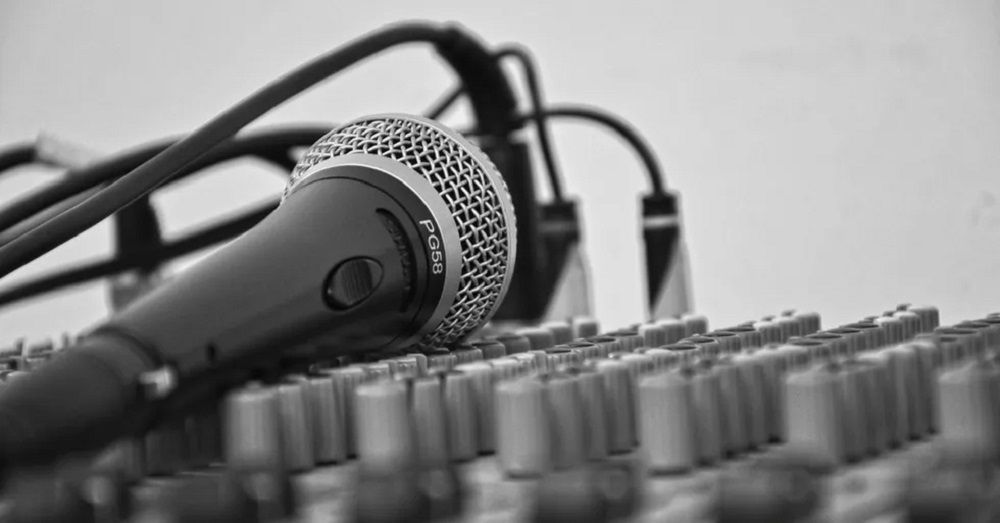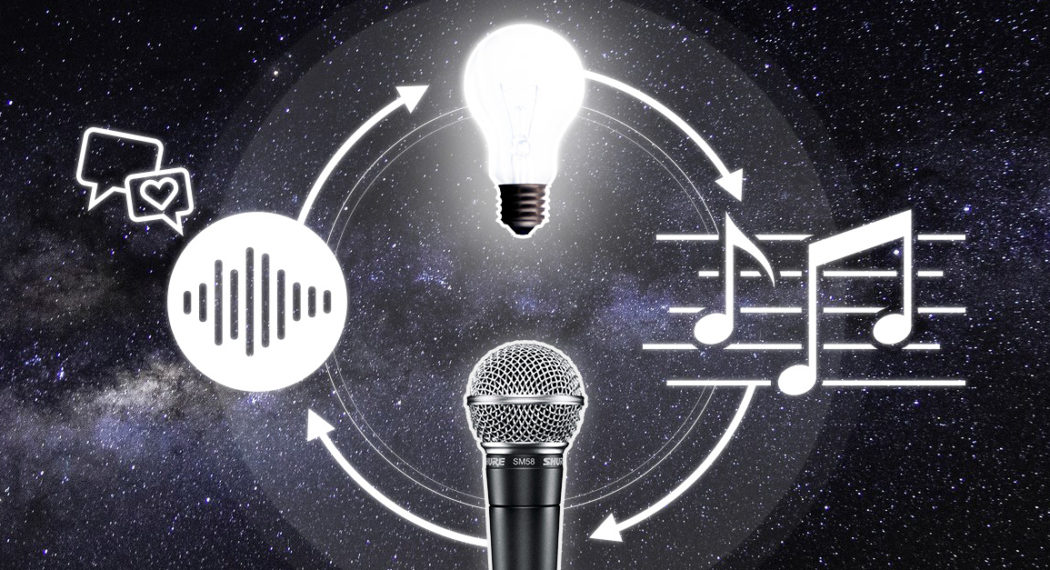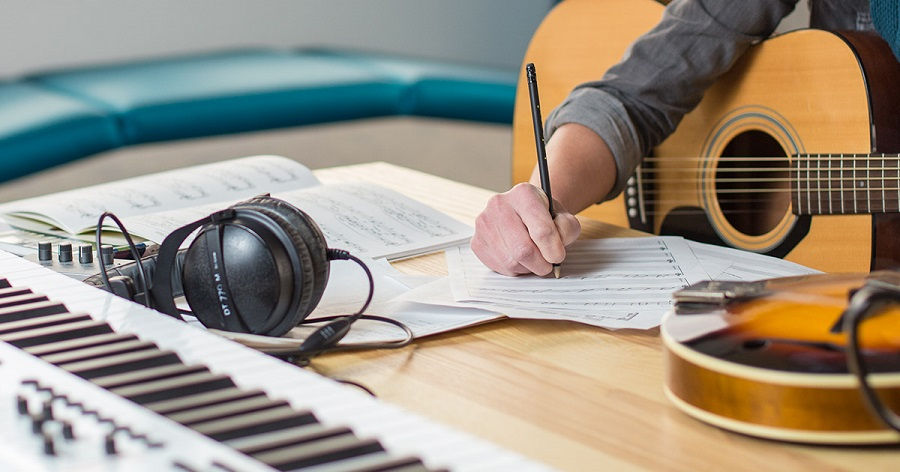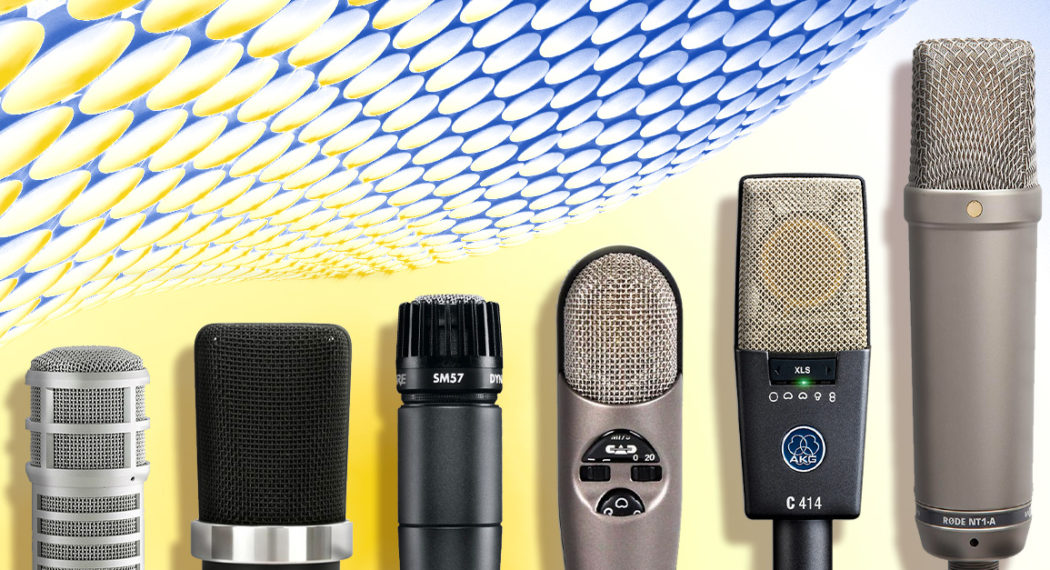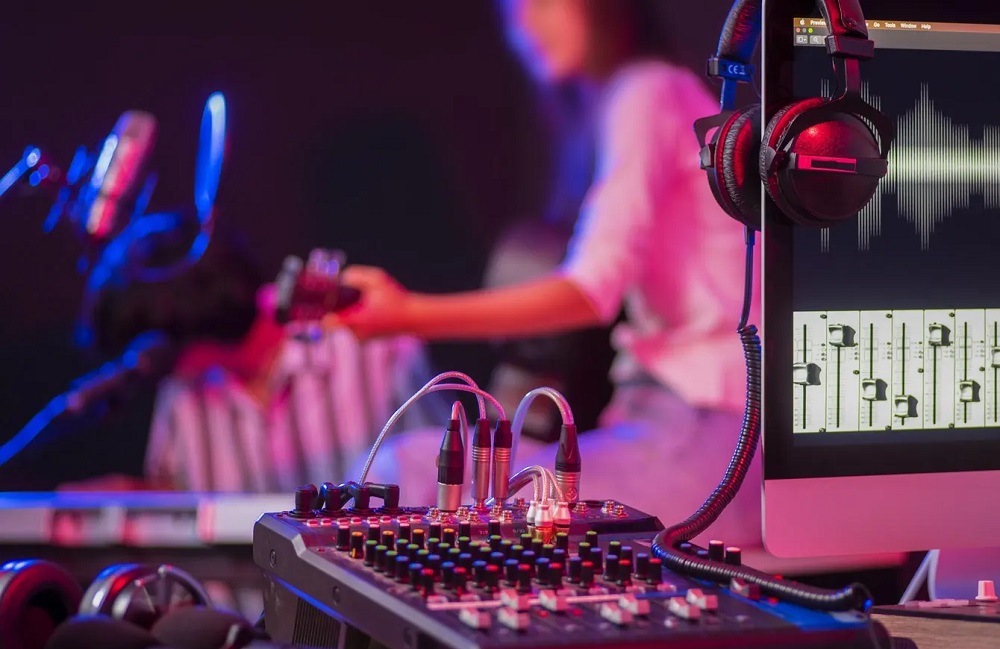There’s an overwhelming number of microphones out there. Even picking the best microphones is a pretty daunting task. But it doesn’t have to be as dizzying as
Even though the number of microphones in production increases every year, there’s only so many ways to capture sound waves in the air.
So if you know what microphone type you need to use, you’ll be able to narrow down your choices and find the right tool for the job.
There are 4 types of microphone:
- Dynamic Microphones
- Large Diaphram Condensor Microphones
- Small Diaphram Condensor Microphones
- Ribbon Microphones
In this article, I’ll go through all the 4 most common and useful microphone types and what they do best.
1. Dynamic Microphones
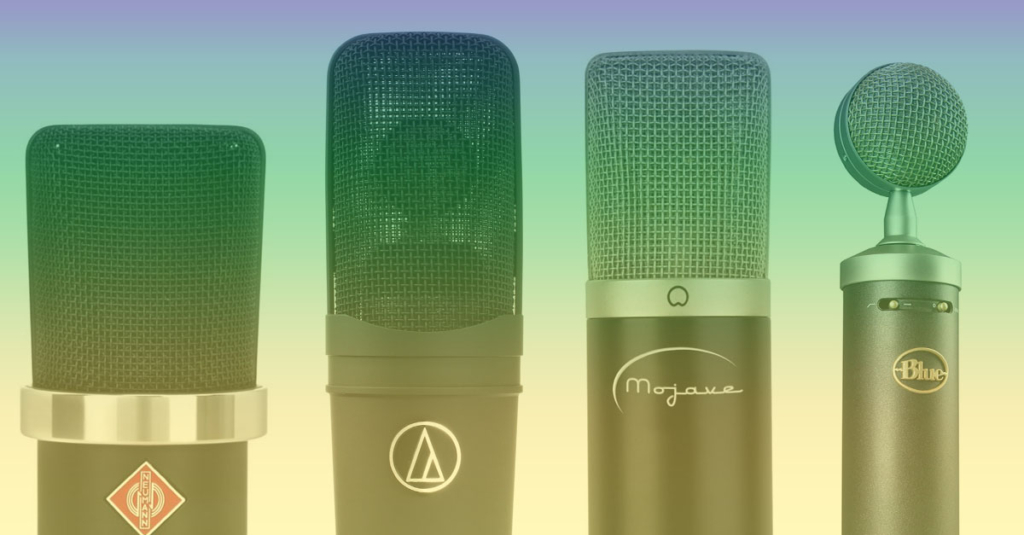
Dynamic Mics are the workhorses of the microphone world.
They’re cheap, durable and sound fantastic on some of the most common sources in recording.
Using a movable induction coil suspended in the field of a magnet, dynamic mics work like a speaker in reverse!
Dynamic mics are responsive to transients and handle high SPL very well. This makes them a natural choice for loud sources like drum kit close mics and guitar and bass cabs.
Given how affordable and versatile they are, there should definitely be a dynamic mic or two in your collection.
And if you only have room for one, there’s really only a single serious contender: the Shure SM57. The versatile SM57 is one of the most accessible tools in recording.
Of course there’s a range of great dynamic designs that work for tons of studio situations including:
- Electrovoice RE20,
- Sennheiser MD421
- Shure SM7B
While all of these mics are great options, none have the grand slam price-to-performance ratio of the SM57.
It’s the go-to choice of many engineers for guitar cabs and snare drums—no home studio should be without one!
2. Large Diaphragm Condenser Microphones
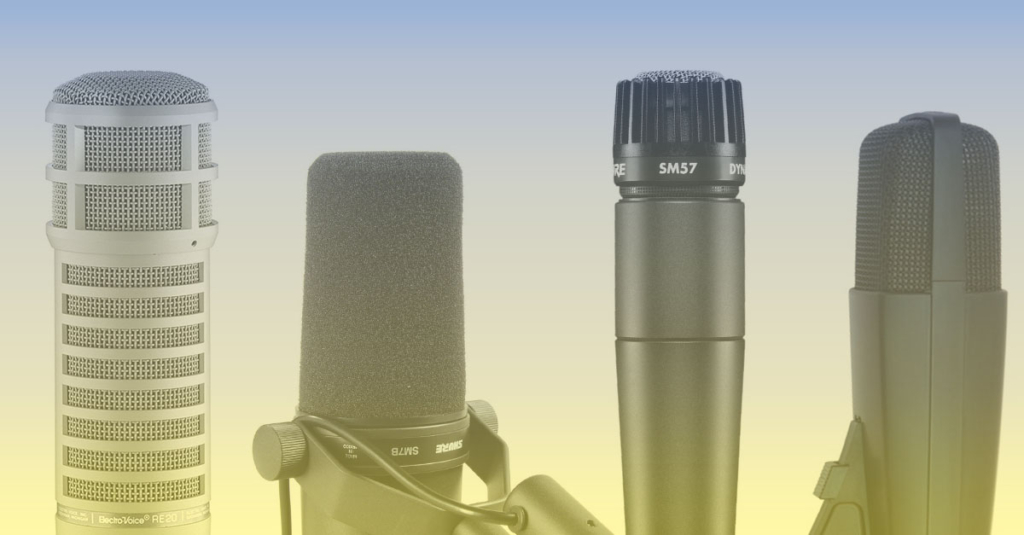
Large diaphragm condenser microphones are probably the first thing that comes to mind when you think of studio recording mics.
They’re the large, stylish and serious looking mics that you see in most professional recording studio situations.
Condenser mics work by using a capacitor (or condenser) to convert acoustic vibrations into an electrical current. That means they need a power source like 48V phantom power to operate.
It also means that they’re much more sensitive than dynamic mics or ribbon mics and output a louder signal.
Their sensitivity makes them ideal for quiet or extremely dynamic sources—like vocals!
Large diaphragm condensers exhibit a number of sonically pleasing qualities for voices. They help create that “larger than life” sound that we associate with pro studio vocals.
But LDCs are effective on all kinds of sources. If you’re looking for one mic that can handle every task, consider a large diaphragm condenser.
Many modern LDCs offer selectable polar patterns making them incredibly versatile and useful in tons of different recording situations and one of the best mics for building your studio around.
3. Small Diaphragm Condenser Microphones
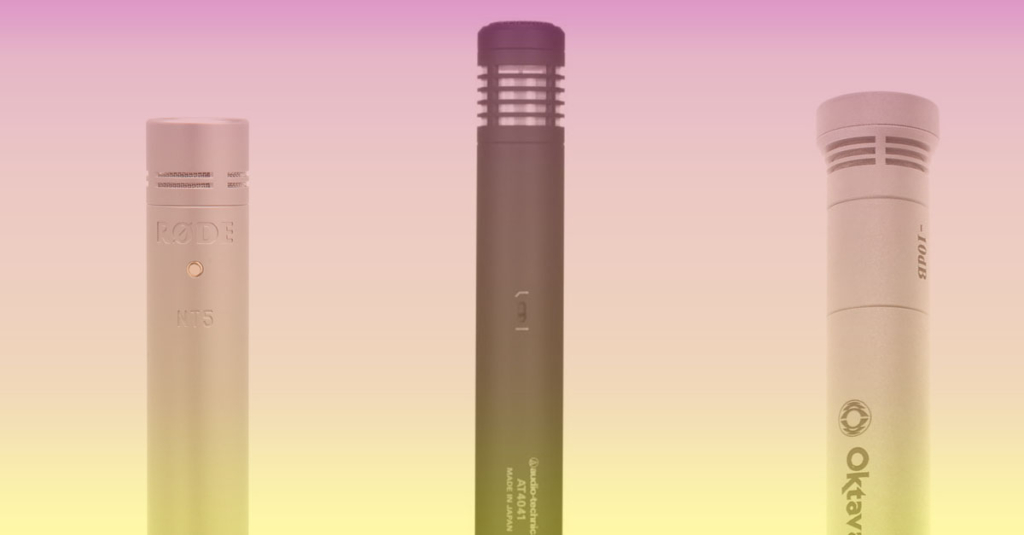
Small Diaphragm Condensers (sometimes called pencil condensers) are the smaller, less flashy cousin of the LDC.
But they’re just as useful, despite their small stature. Small diaphragm condensers have great transient response, extended top end, and consistent pickup patterns.
This makes them great for realistic stereo techniques as well as acoustic instruments. If you sat in on classical music recording session, chances are you would see mostly SDCs.
They often come in pairs for stereo recording, so they’re particularly effective for creating accurate stereo images of real acoustic spaces.
4. Ribbon Microphones
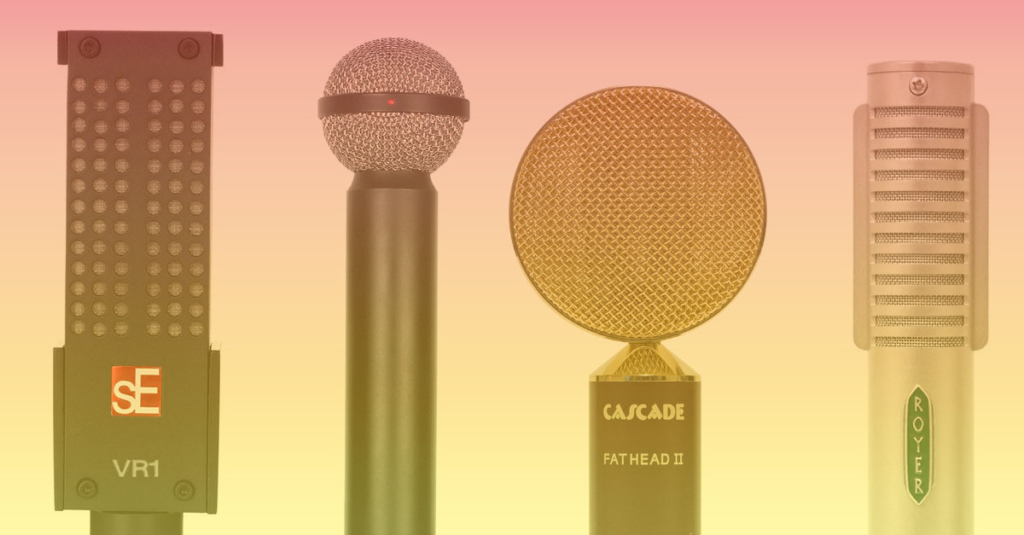
Ribbon technology dates back to the earliest days of microphones. Photos from the golden age of broadcasting are filled with presenters speaking into classic ribbon mics.
Ribbon microphones use an ultra-thin (wait for it) ribbon of electro-conductive material suspended between the poles of a magnet to generate their signal.
Early ribbon designs were incredibly fragile. Moving them improperly, or even subjecting them to high SPL could cause the ribbon to break.
But their sound was worth the trade off in durability. Ribbon mics are prized for their warm, vintage tone.
They’re perfect for when you need to tame excessive or harsh high-end: sources like guitar amps, drum overheads or brass.
Ribbon microphones naturally produce a perfect figure eight polar pattern and respond to EQ extremely well.
Hot Tip: Even though today’s ribbon mics aren’t quite as fragile as the early designs, they’re still easier to damage than dynamics or condensers. Be careful while handling them!
The most important rule of ribbons is never EVER supply 48V phantom power to ribbon mics. You risk electrocuting the ribbon itself!!!
Choose microphone types wisely
In recording, microphone choice is probably the most important factor after the quality of the instrument itself.
Learn how to get it right by selecting the right microphone types and get the best mic for your needs.
Now that you know when to choose dynamics, ribbons or condensers get back to your music and mic something up!


